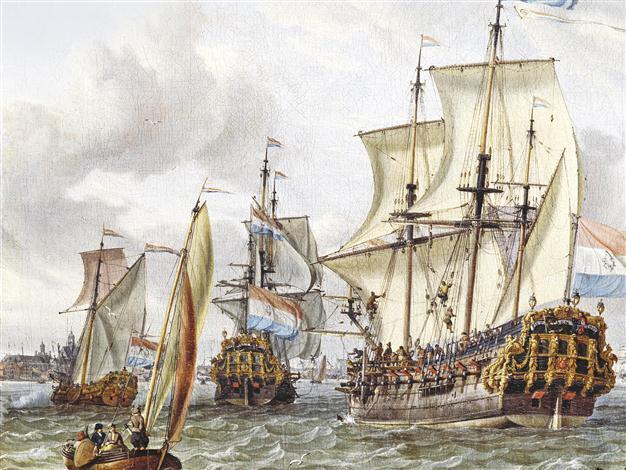Exhibit sheds light on Turk-Dutch relations
ISTANBUL - Hürriyet Daily News

The paintings, engravings and objects in the exhibition at Pera Museum are being shown together for the first time in centuries.
Commemorating four centuries of cultural, diplomatic and trade relations between Turkey and the Netherlands, the Suna and İnan Kıraç Foundation Pera Museum is presenting an exhibition titled “Sultans, Merchants, Painters: The Early Years of Turkish-Dutch Relations.”
Organized in collaboration with the Amsterdam Museum and with the support of several other partners, including the Rijksmuseum in Amsterdam, the exhibition includes over 80 works comprised of oil paintings, watercolors, engravings and books. Works by the well-known master painter from the Tulip Era, Jean-Baptiste Vanmour, are also included.
In March 1612, after a long journey, Cornelis Haga arrived in the capital of the Ottoman Empire as Dutch envoy. The states-general of the young republic of the United Netherlands had designated Haga as their first official representative to the sultan of the Ottoman Empire. Although his mission was first and foremost a diplomatic one, he is thought to have initiated early economic diplomacy as well. Rather than just maintaining political contacts between the Netherlands and the Ottoman Empire, he was also assigned to secure and advance the commercial interests of the Netherlands in the Ottoman Empire.
In the 17th century, a company was set up in Amsterdam to arm Dutch ships and encourage trade. It was initially called the “Directorate of Levant Trade and Navigation in the Mediterranean,” but soon became the Directorate of Levant Trade.
Haga in
Istanbul was one of its main founders. The Directorate of Levant Trade coordinated maritime contact with the Ottoman Empire. The Amsterdam office of the Directorate of Levant Trade was situated in the most important building of the Dutch Republic: the town hall on Dam Square in Amsterdam. This is because Levantine trade was one of the pillars of Dutch Eastern commerce. Trade between the Mediterranean and Northern Europe was one of the reasons for the extraordinary prosperity of the Netherlands in the 17th century.
Older days of Istanbul and AmsterdamBased on an inventory in the archives of the Directorate of Levant Trade, there is detailed information as to the collection of art owned by the Directorate of Levant Trade. According to this 1810 inventory, the room must have been replete with impressive paintings and maps of the Ottoman Empire.
In the following years, after a period of decline, the Directorate of Levant Trade was formally disbanded, and all its possessions ended up in the hands of the Dutch state. Eventually all archival materials went to the National Archives in The Hague, while works of art went to the Rijksmuseum in Amsterdam.
The new exhibition provides visitors with an exceptional opportunity to embark on a journey through the older days of Istanbul and Amsterdam, as well as the historical periods of the Ottoman and the Dutch empires.
The paintings, engravings and objects included in the exhibition are being shown together for the first time in centuries. The paintings, the majority of which were executed by Vanmour and his school, represent a particular point of interest for art lovers. Vanmour is renowned as an “eyewitness” to the Tulip Era of the early 18th century.
“Sultans, Merchants, Painters: The Early Years of Turkish-Dutch Relations” opened Jan. 21 and will continue through April 1. Upon completing its Istanbul visit, the exhibition will be on display at the Amsterdam Museum between April 18 and Aug. 26.
culture,
